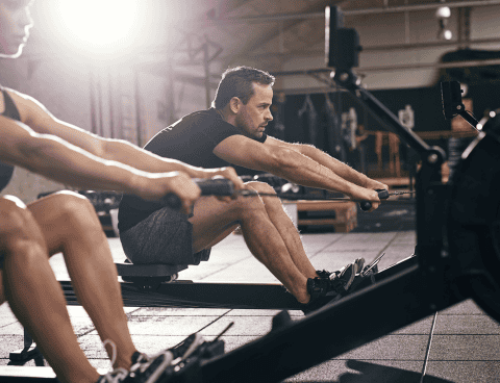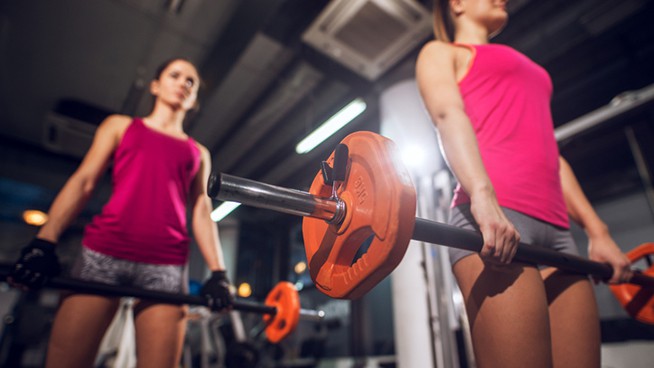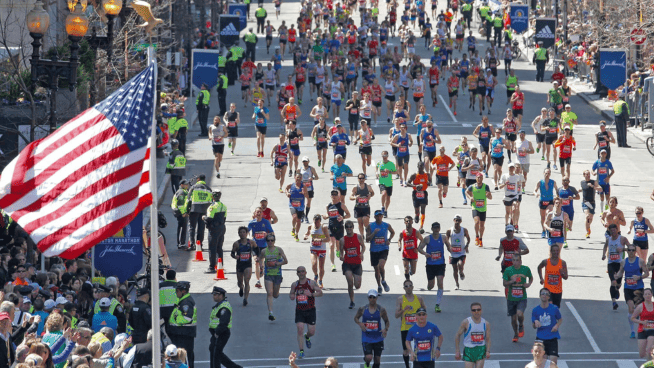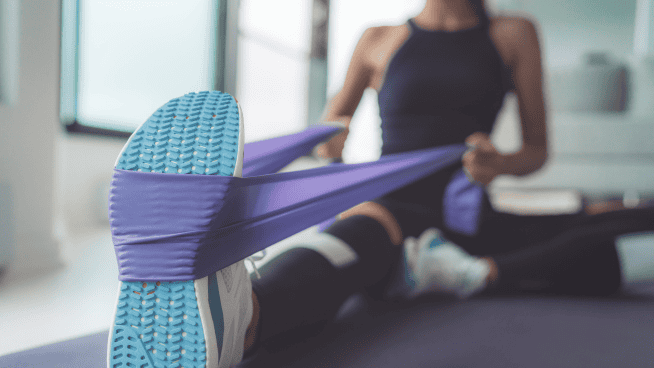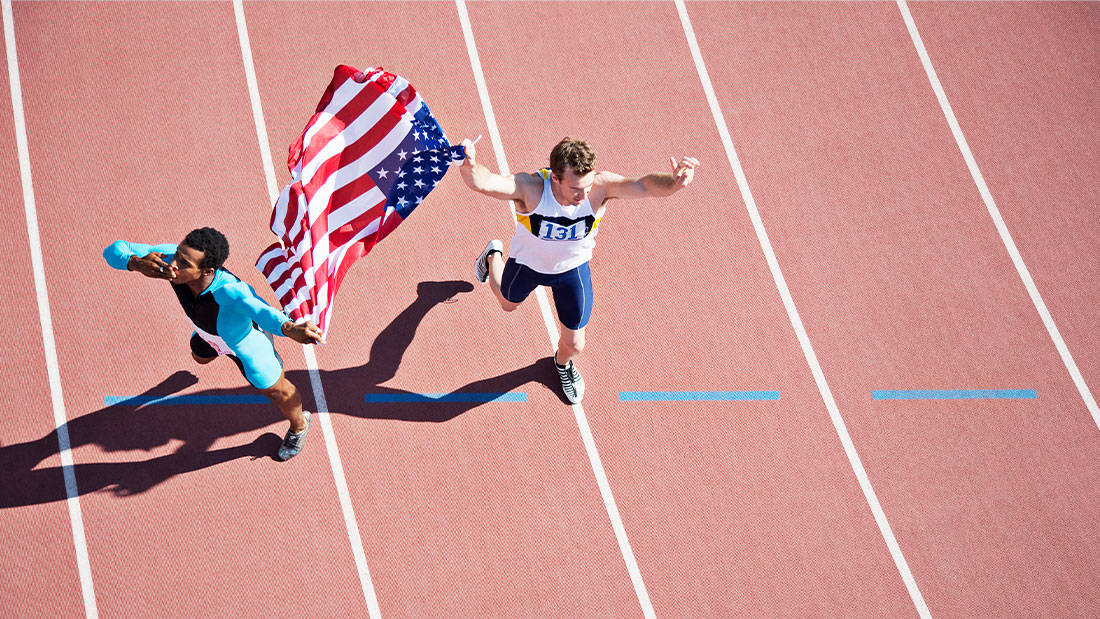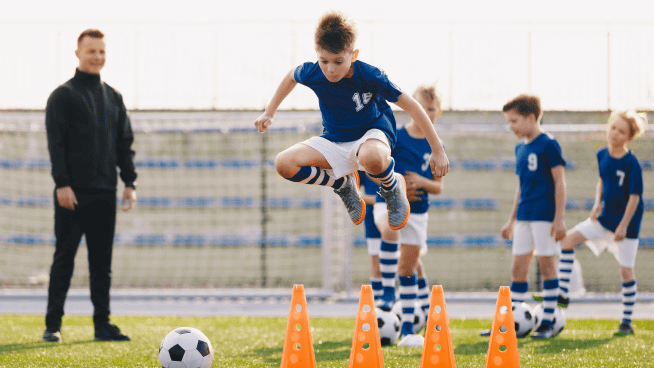“Once you’ve wrestled, everything else in life is easy.” -Dan Gable
I have always admired the wrestlers’ work ethic. My dad coached high school wrestling for 20 years, but I preferred team sports and never wore a singlet. In early March of 1997, I took a campus visit to the University of Iowa. As a zero-star football/baseball recruit, I was with a group of high school athletes touring the athletic facilities, which led us to Carver-Hawkeye Arena. A sunken arena, the basketball court is below ground and out of sight from the main entrances.
My group was listening to the proud history of Hawkeye basketball and wrestling when we heard scary, loud, noises coming from the pit of the arena, which interrupted our ability to focus. The noises kept getting louder and louder; it sounded like a pack of blood-thirsty, heavy-footed demons were getting closer and closer to our location! As I backed away from the group and peeked down the stairs to see what was happening below. I witnessed the Hawkeye wrestling team’s conditioning session, which consisted of running up the Carver-Hawkeye stadium steps while carrying a teammate, piggy-back style. This was right before the 1996-1997 Hawkeyes became both Big Ten Champions and National Champions, under legendary Iowan/coach Dan Gable. As a skinny 17-year-old, it looked like the hardest, most intimidating workout I had ever seen. These wrestlers were crazy!
In his later years, Gable, whose own superhuman career ended at the age of 26 due to numerous injuries, would lament that he wished he trained his wrestlers smarter instead of harder. The sport is demanding and brutal, as Gable used to workout 2-3 times per day, seven days per week.
As a judo and Brazilian jiu-jitsu practitioner, I have experienced how a high amount of intensity and volume—without adequate rest and recovery—can destroy the body of even the most hardened competitor. While understanding this wrestling mentality, I wondered if there was a way to reap conditioning and skill-based improvement without the punishment of overtraining and physical pain? If the best ability is availability, then how can we train our wrestlers to understand when to charge and recharge?
Professionally, my next foray into wrestling was training with youth phenom Max Schneider. From Chicago’s Lane Tech High School, Max had two undefeated Illinois High School Association state championship seasons (2010 and 2012), was a Cliff Keen All-American, and would later wrestle collegiately at Cal Poly and San Francisco State. Also a judo black belt, Max was a gold medalist at the 2010 Summer Youth Olympics and a training partner for Team USA at the 2016 Olympics. Max was a high-level, two-sport combat athlete and had the scars/miles on his body to prove it. While Max dominated on both the judo and the wrestling mats, his body never had an off-season to heal. We tried to keep him available by implementing corrective exercise strategies, cross-train with concepts/skills from other sports, and not beat the crap out of him each day in the gym.
As a more experienced performance coach, I have teamed up with Beat the Streets Chicago (btschicago.org) to incorporate more athletic-based movements into their high school wrestling program.
The inspirational story of BTS Executive Director Mike Powell has been well documented, and his success at Oak Park-River Forest High School was the national gold standard. Watch here: https://www.espn.com/video/clip/_/id/8574528
Coach Powell had state champions, team champions, and future Olympians on his roster throughout his career. In the IHSA state tournaments, it seemed like Max was constantly fiercely battling these uber-talented and gritty Oak Park grapplers. No one accused Coach Powell’s wrestlers of being unprepared.
We know that wrestling is a physically demanding sport and that wrestlers are some of the toughest athletes around. As all eras of wrestlers can attest, they will train as hard as they can for as long as they can. But, sometimes the grind of wrestling practice can inhibit the development of overall athletic ability. Many of these young men and women wrestle year-round, and like many single-sport athletes, do not have an off-season to:
- Heal their beat-up bodies.
- Correct muscular imbalances.
- Introduce a safe and progressive strength and conditioning program.
Our goal was to step away from the mat and work on clean athletic movement, improved body control/coordination, dynamic stabilization, and overall performance efficiency. By creating more functional high school athletes, we have created more functional high school wrestlers.
Each BTS Performance Camp station had a different focus:
- Dynamic Movement/Corrective Exercises
- SAQ
- Power
- Grappling/Tumbling/Crawling
- Strength
As you may expect, the wrestlers were amped up to train, so calming them down to prepare their minds was our first task.
To practice diaphragmatic breathing, we had them lay on their backs (position wrestlers passionately hate to be in), close their eyes, and bring awareness to their breath for two minutes—the exact duration of an IHSA wrestling period.
We used the 4-2-6 technique with a four-second nasal inhalation, a two-second hold, and a six-second mouth exhalation. With a longer mouth exhalation, the body can trigger its parasympathetic nervous system, reminding itself to relax. The parasympathetic nervous system’s counterpart, the sympathetic nervous system, cannot differentiate between the stress of a wrestle-off, a first varsity match, the city championship, trying to find a Homecoming date, an ACT, or the freezing temperatures of a Chicago polar vortex. All the body knows is stress. So, the better we can apply breathing to self-regulate our behavior, we can perform and use our energy efficiently.
1. Dynamic Movement
The dynamic stretching starts slower before building to faster, incorporating a gamut of tri-planar, multi-directional, full-body-coordination-enhancing warmup movements. Every exercise had purpose and placement within the warmup, and our goal was to improve efficiency with each rep. Some of the exercises included: lunge with a frontside lean, straight-legged kicks, lateral lunge with a reach, rotational single-leg hinges, and inchworms. We wanted to introduce new movements but keep them consistent so familiarity could improve execution. If the athletes considered dynamic stretching to be their own personal pregame warmup, there was a higher level of ownership and accountability.
We incorporated corrective mini-band exercises for glute-activation (to avoid quadricep dominance) and rotator cuff strengthening/postural awareness for improved shoulder stability and injury prevention.
(https://www.instagram.com/p/CQy_SE1nUJ3/?utm_source=ig_web_copy_link)
2. SAQ (Speed, Agility and Quickness)
Once we got their bodies bending better, it was time to “rev the engine” with speed, agility, and quickness. The sport of wrestling requires athletes to move swiftly in a small space, against a resisting opponent who is also trying to do the same. The ability to get from A to B inside this small area of chaos can be trained more efficiently through action/reaction and quick acceleration/deceleration/change of directions drills.
Multi-directional speed ladder, 10-yard agility bursts, and technical form-running helped reinforce full-body coordination and precision foot placement and movement efficiency.
3. Power
Everyone loves the big jumping exercises, but our athletes needed to earn these reps by demonstrating a controlled ability to stabilize and decelerate dynamically. We can minimize the impact and protect their oft-battered joints by focusing on the landing and teaching joint-stacking cueing. While jumping is usually not part of the sport, exploding through a takedown is necessary. Vertical jumps, broad jumps, and multi-directional skate jumps were our base power movements.
4. Grappling/Tumbling/Crawling
Wrestling is one of the only sports where athletes routinely have all four of their limbs on the ground at the same time, so being able to move from a quadruped position effectively will improve total-body coordination. Bear-crawling, crab-walking, and various animal-themed movement patterns are programmed here. Plus, adding judo and Brazilian jiu-jitsu crossover patterns like rolling front/back/side somersaults, cartwheels, handstands, kick-throughs, and butt/hip scoots help promote body awareness and maintaining focus while dizzy.
5. Strength
BTS has pull-up bars and climbing ropes all over their large wrestling room, so the wrestlers were quite familiar with vertical pulling patterns and push-ups; they do a ton of push-ups. In the weight room, we introduced bench pressing (which does not help athletically but gives them an alternative to push-ups). This allows the kids spot each other safely; TRX face pulls and horizontal rowing; Bulgarian bag box step-ups; and partner Nordic hamstring curls.
Two upper-body stations; two lower-body stations. We wanted easy-to-follow exercises with two simple weight room rules:
- No one gets hurt
- No stupid s***
This way, no matter their weight room experience, we introduced a strong core of lifts appropriate for high school-aged wrestlers. They could confidently repeat the program once our BTS Performance Camp came to a close.
Best of luck to all the BTS athletes as they begin training for their upcoming high school seasons! *Special thanks to former Iowa State University wrestler Ben Perna for consulting on this project and to Jake Fine for the video credits.
RECOMMENDED FOR YOU
MOST POPULAR
“Once you’ve wrestled, everything else in life is easy.” -Dan Gable
I have always admired the wrestlers’ work ethic. My dad coached high school wrestling for 20 years, but I preferred team sports and never wore a singlet. In early March of 1997, I took a campus visit to the University of Iowa. As a zero-star football/baseball recruit, I was with a group of high school athletes touring the athletic facilities, which led us to Carver-Hawkeye Arena. A sunken arena, the basketball court is below ground and out of sight from the main entrances.
My group was listening to the proud history of Hawkeye basketball and wrestling when we heard scary, loud, noises coming from the pit of the arena, which interrupted our ability to focus. The noises kept getting louder and louder; it sounded like a pack of blood-thirsty, heavy-footed demons were getting closer and closer to our location! As I backed away from the group and peeked down the stairs to see what was happening below. I witnessed the Hawkeye wrestling team’s conditioning session, which consisted of running up the Carver-Hawkeye stadium steps while carrying a teammate, piggy-back style. This was right before the 1996-1997 Hawkeyes became both Big Ten Champions and National Champions, under legendary Iowan/coach Dan Gable. As a skinny 17-year-old, it looked like the hardest, most intimidating workout I had ever seen. These wrestlers were crazy!
In his later years, Gable, whose own superhuman career ended at the age of 26 due to numerous injuries, would lament that he wished he trained his wrestlers smarter instead of harder. The sport is demanding and brutal, as Gable used to workout 2-3 times per day, seven days per week.
As a judo and Brazilian jiu-jitsu practitioner, I have experienced how a high amount of intensity and volume—without adequate rest and recovery—can destroy the body of even the most hardened competitor. While understanding this wrestling mentality, I wondered if there was a way to reap conditioning and skill-based improvement without the punishment of overtraining and physical pain? If the best ability is availability, then how can we train our wrestlers to understand when to charge and recharge?
Professionally, my next foray into wrestling was training with youth phenom Max Schneider. From Chicago’s Lane Tech High School, Max had two undefeated Illinois High School Association state championship seasons (2010 and 2012), was a Cliff Keen All-American, and would later wrestle collegiately at Cal Poly and San Francisco State. Also a judo black belt, Max was a gold medalist at the 2010 Summer Youth Olympics and a training partner for Team USA at the 2016 Olympics. Max was a high-level, two-sport combat athlete and had the scars/miles on his body to prove it. While Max dominated on both the judo and the wrestling mats, his body never had an off-season to heal. We tried to keep him available by implementing corrective exercise strategies, cross-train with concepts/skills from other sports, and not beat the crap out of him each day in the gym.
As a more experienced performance coach, I have teamed up with Beat the Streets Chicago (btschicago.org) to incorporate more athletic-based movements into their high school wrestling program.
The inspirational story of BTS Executive Director Mike Powell has been well documented, and his success at Oak Park-River Forest High School was the national gold standard. Watch here: https://www.espn.com/video/clip/_/id/8574528
Coach Powell had state champions, team champions, and future Olympians on his roster throughout his career. In the IHSA state tournaments, it seemed like Max was constantly fiercely battling these uber-talented and gritty Oak Park grapplers. No one accused Coach Powell’s wrestlers of being unprepared.
We know that wrestling is a physically demanding sport and that wrestlers are some of the toughest athletes around. As all eras of wrestlers can attest, they will train as hard as they can for as long as they can. But, sometimes the grind of wrestling practice can inhibit the development of overall athletic ability. Many of these young men and women wrestle year-round, and like many single-sport athletes, do not have an off-season to:
- Heal their beat-up bodies.
- Correct muscular imbalances.
- Introduce a safe and progressive strength and conditioning program.
Our goal was to step away from the mat and work on clean athletic movement, improved body control/coordination, dynamic stabilization, and overall performance efficiency. By creating more functional high school athletes, we have created more functional high school wrestlers.
Each BTS Performance Camp station had a different focus:
- Dynamic Movement/Corrective Exercises
- SAQ
- Power
- Grappling/Tumbling/Crawling
- Strength
As you may expect, the wrestlers were amped up to train, so calming them down to prepare their minds was our first task.
To practice diaphragmatic breathing, we had them lay on their backs (position wrestlers passionately hate to be in), close their eyes, and bring awareness to their breath for two minutes—the exact duration of an IHSA wrestling period.
We used the 4-2-6 technique with a four-second nasal inhalation, a two-second hold, and a six-second mouth exhalation. With a longer mouth exhalation, the body can trigger its parasympathetic nervous system, reminding itself to relax. The parasympathetic nervous system’s counterpart, the sympathetic nervous system, cannot differentiate between the stress of a wrestle-off, a first varsity match, the city championship, trying to find a Homecoming date, an ACT, or the freezing temperatures of a Chicago polar vortex. All the body knows is stress. So, the better we can apply breathing to self-regulate our behavior, we can perform and use our energy efficiently.
1. Dynamic Movement
The dynamic stretching starts slower before building to faster, incorporating a gamut of tri-planar, multi-directional, full-body-coordination-enhancing warmup movements. Every exercise had purpose and placement within the warmup, and our goal was to improve efficiency with each rep. Some of the exercises included: lunge with a frontside lean, straight-legged kicks, lateral lunge with a reach, rotational single-leg hinges, and inchworms. We wanted to introduce new movements but keep them consistent so familiarity could improve execution. If the athletes considered dynamic stretching to be their own personal pregame warmup, there was a higher level of ownership and accountability.
We incorporated corrective mini-band exercises for glute-activation (to avoid quadricep dominance) and rotator cuff strengthening/postural awareness for improved shoulder stability and injury prevention.
(https://www.instagram.com/p/CQy_SE1nUJ3/?utm_source=ig_web_copy_link)
2. SAQ (Speed, Agility and Quickness)
Once we got their bodies bending better, it was time to “rev the engine” with speed, agility, and quickness. The sport of wrestling requires athletes to move swiftly in a small space, against a resisting opponent who is also trying to do the same. The ability to get from A to B inside this small area of chaos can be trained more efficiently through action/reaction and quick acceleration/deceleration/change of directions drills.
Multi-directional speed ladder, 10-yard agility bursts, and technical form-running helped reinforce full-body coordination and precision foot placement and movement efficiency.
3. Power
Everyone loves the big jumping exercises, but our athletes needed to earn these reps by demonstrating a controlled ability to stabilize and decelerate dynamically. We can minimize the impact and protect their oft-battered joints by focusing on the landing and teaching joint-stacking cueing. While jumping is usually not part of the sport, exploding through a takedown is necessary. Vertical jumps, broad jumps, and multi-directional skate jumps were our base power movements.
4. Grappling/Tumbling/Crawling
Wrestling is one of the only sports where athletes routinely have all four of their limbs on the ground at the same time, so being able to move from a quadruped position effectively will improve total-body coordination. Bear-crawling, crab-walking, and various animal-themed movement patterns are programmed here. Plus, adding judo and Brazilian jiu-jitsu crossover patterns like rolling front/back/side somersaults, cartwheels, handstands, kick-throughs, and butt/hip scoots help promote body awareness and maintaining focus while dizzy.
5. Strength
BTS has pull-up bars and climbing ropes all over their large wrestling room, so the wrestlers were quite familiar with vertical pulling patterns and push-ups; they do a ton of push-ups. In the weight room, we introduced bench pressing (which does not help athletically but gives them an alternative to push-ups). This allows the kids spot each other safely; TRX face pulls and horizontal rowing; Bulgarian bag box step-ups; and partner Nordic hamstring curls.
Two upper-body stations; two lower-body stations. We wanted easy-to-follow exercises with two simple weight room rules:
- No one gets hurt
- No stupid s***
This way, no matter their weight room experience, we introduced a strong core of lifts appropriate for high school-aged wrestlers. They could confidently repeat the program once our BTS Performance Camp came to a close.
Best of luck to all the BTS athletes as they begin training for their upcoming high school seasons! *Special thanks to former Iowa State University wrestler Ben Perna for consulting on this project and to Jake Fine for the video credits.

